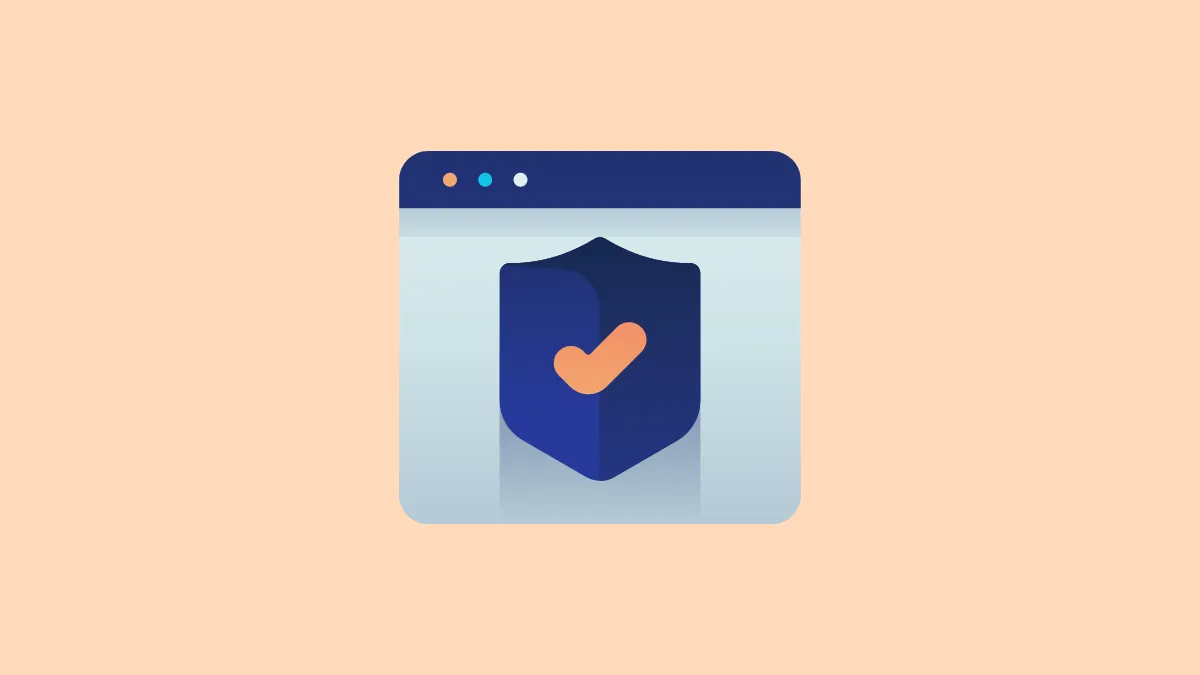Almost all modern browsers come with the 'Do Not Track' feature, which sends a request to websites not to track users. It helps users prevent websites from collecting user data regarding their online activity, which can be used for marketing and advertising purposes. You can enable this feature on most desktop and mobile browsers, and the process is quite simple and can be completed in just a few seconds.
Google Chrome
- Launch Google Chrome and click on the three dots in the top right.

- Then scroll down and click on 'Settings' from the menu.
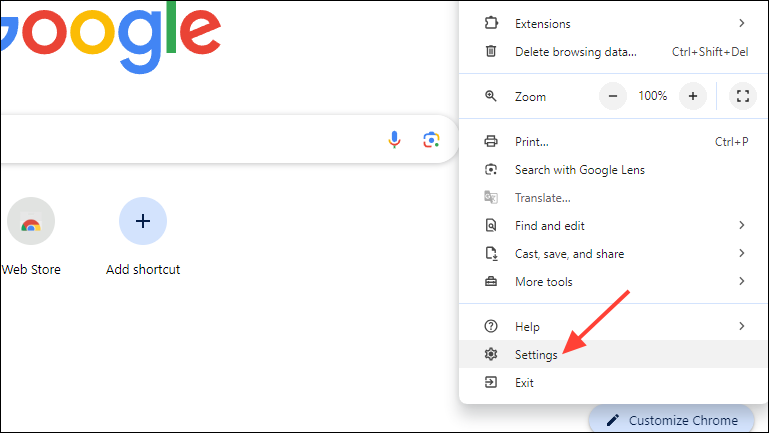
- When the Settings opens, click on 'Privacy and Security' on the left.
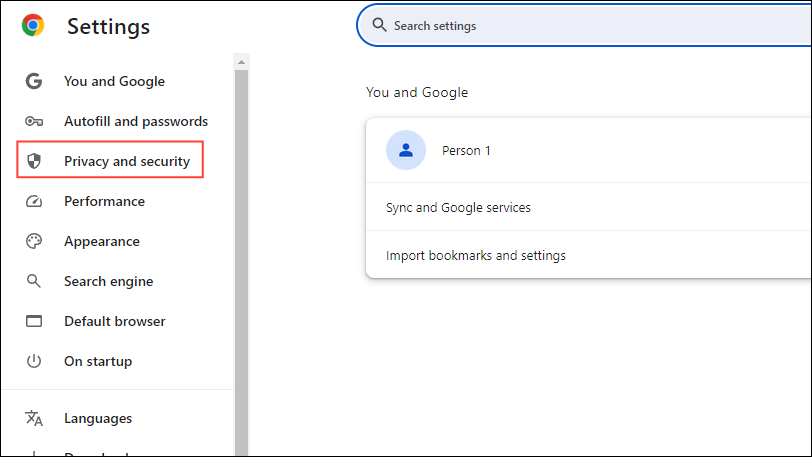
- In the Privacy and Security section, click on 'Third-party cookies'.

- Scroll down to the 'Advanced' section and click on the 'Send a Do Not Track request with your browsing traffic' toggle to turn it on. Then click on the 'Confirm' button.
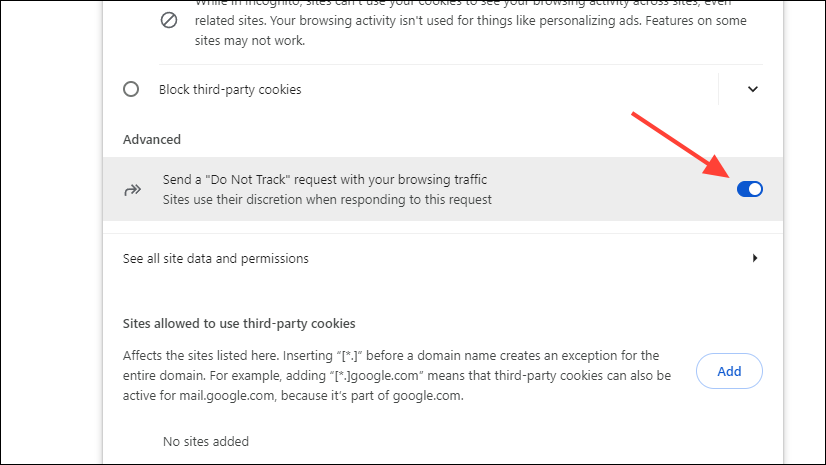
Chrome on mobile
- On a mobile device, open Chrome and tap on the three dots in the top right.
- Then tap on 'Settings'.

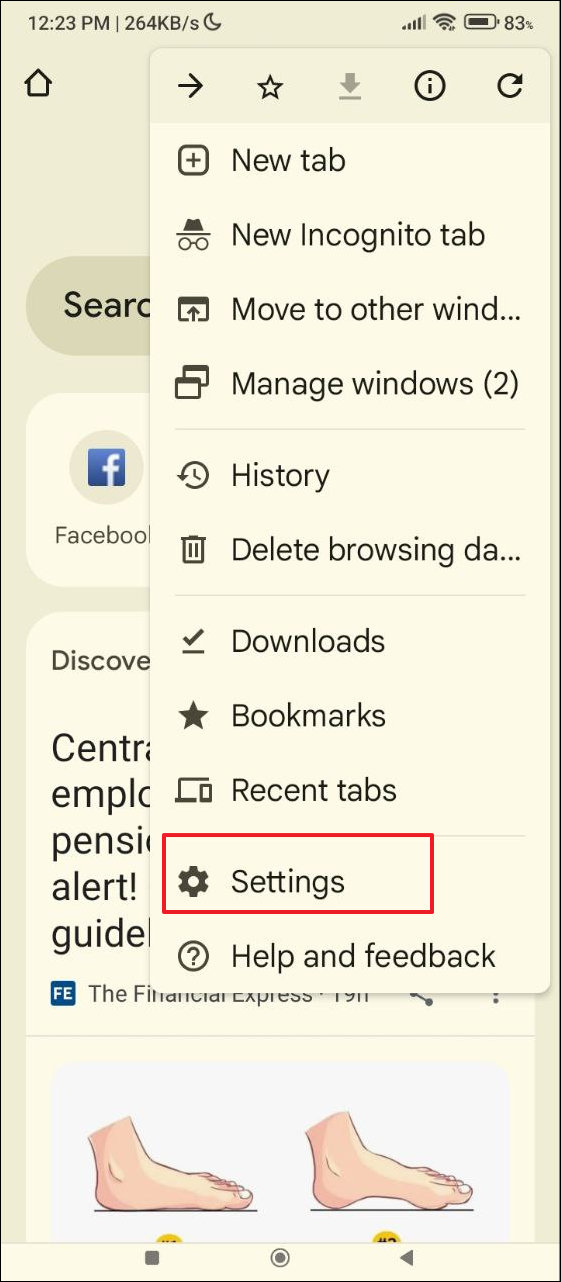
- Next, tap on the 'Privacy and Security' option.
- You will see a 'Do Not Track' setting. Tap on it to open it.
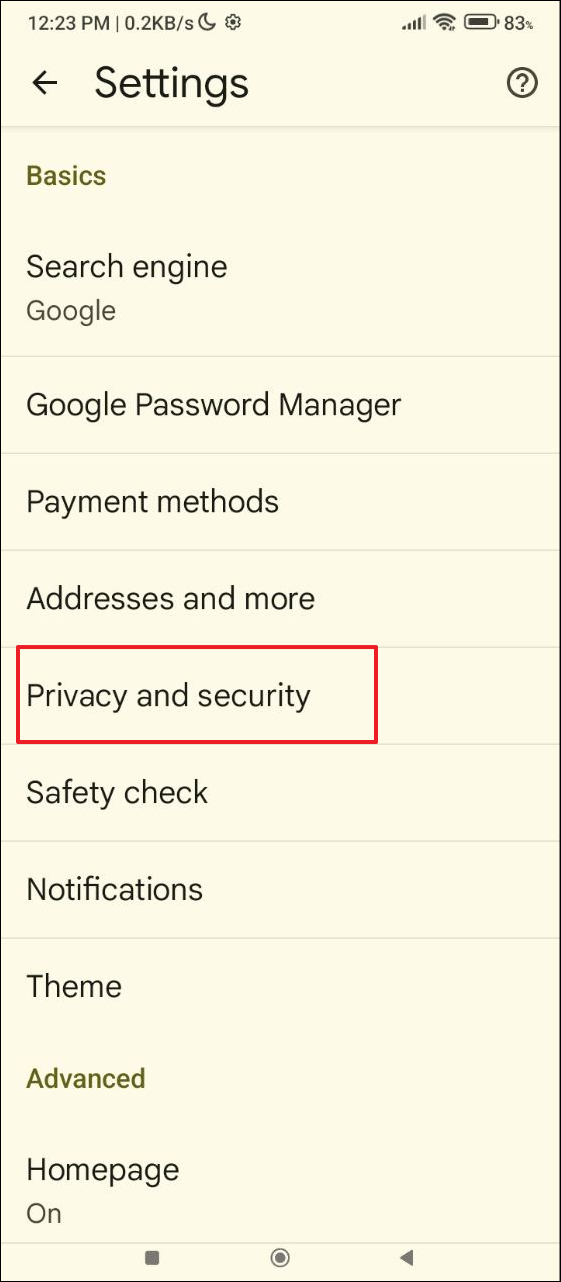

- Finally, tap on the 'Send a Do Not Track' request toggle at the top to enable the option.
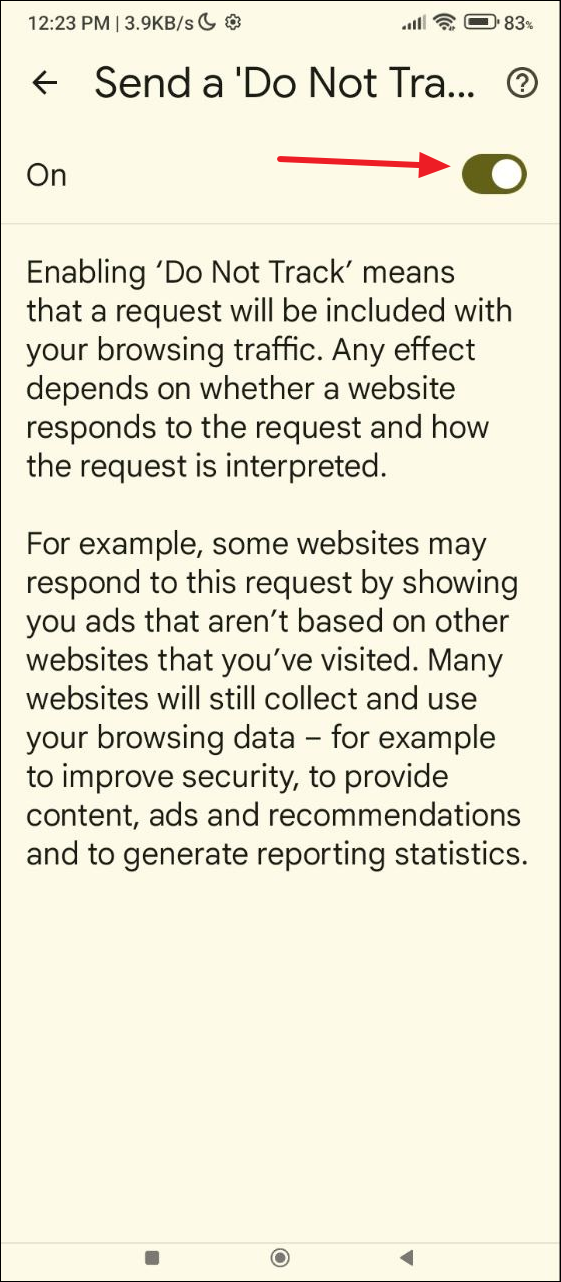
Mozilla Firefox
You can only enable the 'Do Not Track' feature on the desktop version of Firefox, not on the mobile version.
- Open Firefox on your computer and click on the hamburger menu that appears as a set of three lines on the top right.
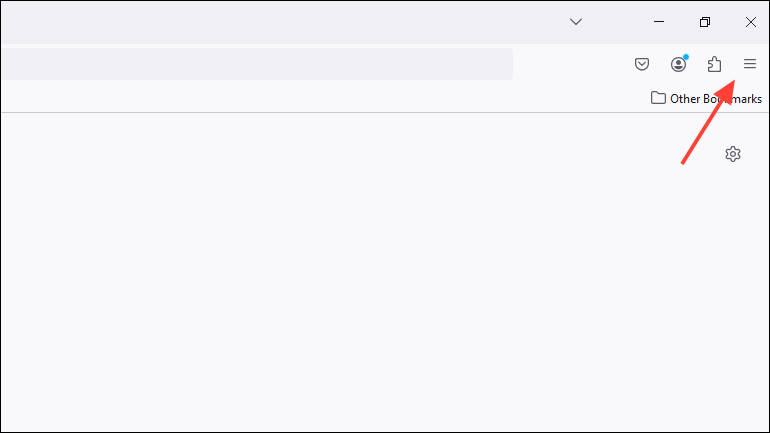
- Then click on 'Settings' in the dropdown menu.

- Next, click on 'Privacy and Security' on the left.

- Scroll down to the 'Website Privacy Preferences' section and click on the checkbox next to 'Send websites a "Do Not Track" request'.
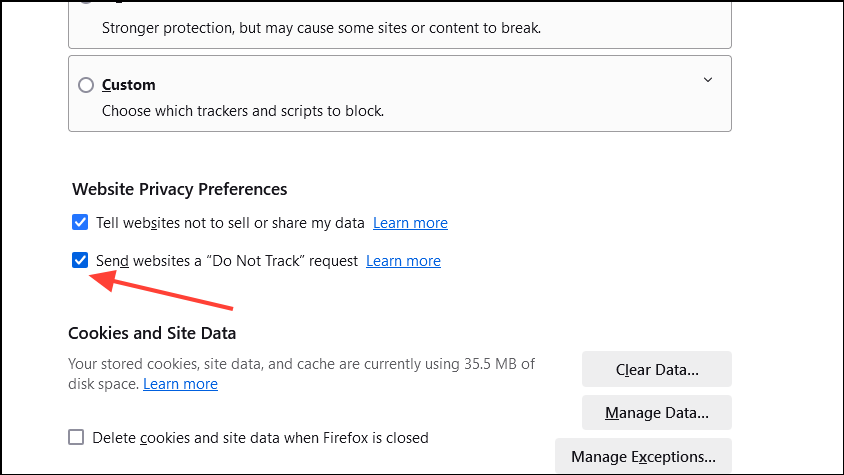
Microsoft Edge
- Open the Edge browser and click on the three dots on the top right.

- Click on 'Settings' in the dropdown menu.

- On the page that opens, click on 'Privacy, search, and services'.

- Scroll down to the 'Privacy' section and click on the 'Send "Do Not Track" requests' toggle to turn it on. Tap on the 'Send Request' button in the pop-up that appears.

Edge on mobile
- Open the Edge browser on your mobile and tap on the hamburger menu (three horizontal lines) in the bottom right.
- Then tap on the 'Settings' option in the popup menu.

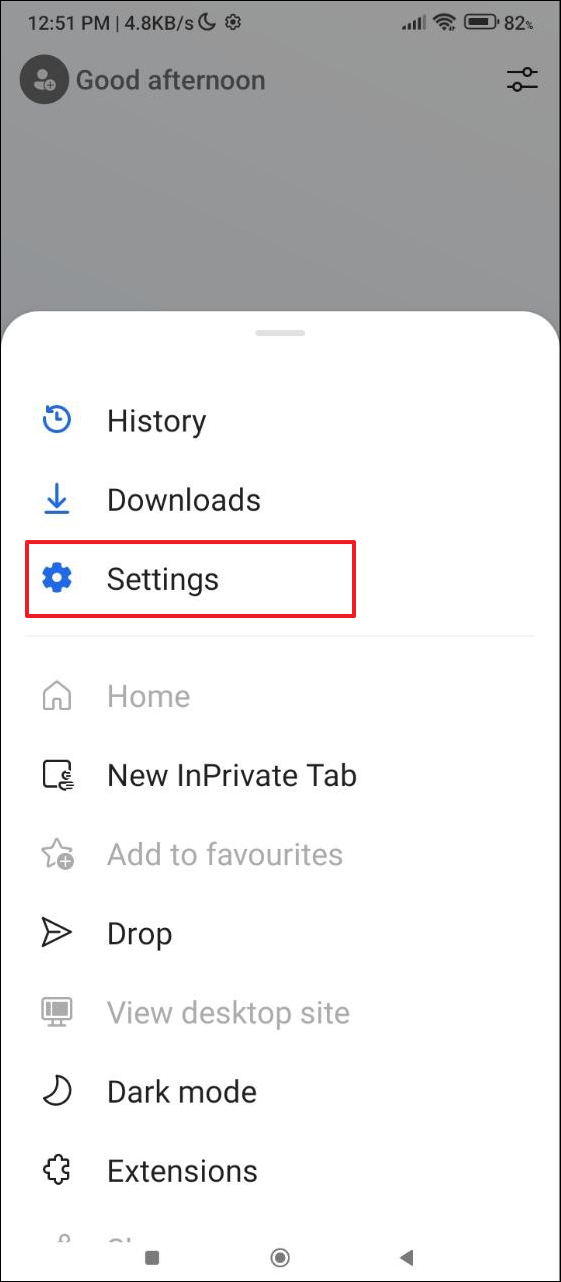
- On the Settings page, tap on 'Privacy and Security'.
- Then tap on the 'Do Not Track' option.

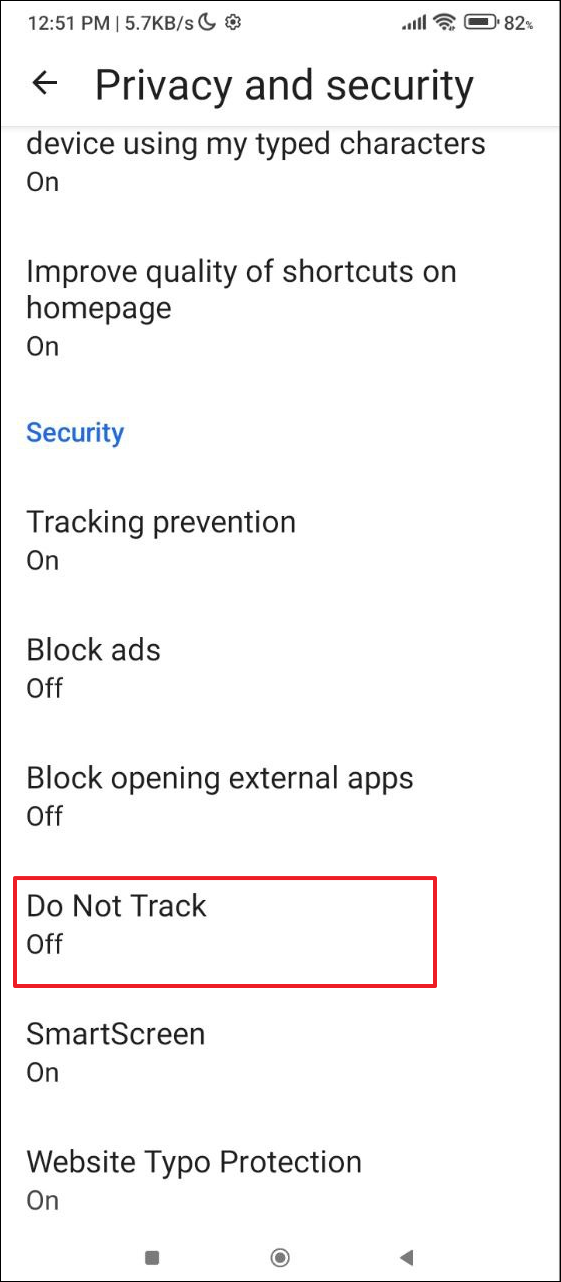
- Lastly, tap on the toggle on the Do Not Track page to enable it.

Brave browser
Turning on the 'Do Not Track' feature in the Brave web browser is quite similar to Chrome and Edge since it is also based on Chromium.
- Open the Brave browser and click on the hamburger menu at the top right.
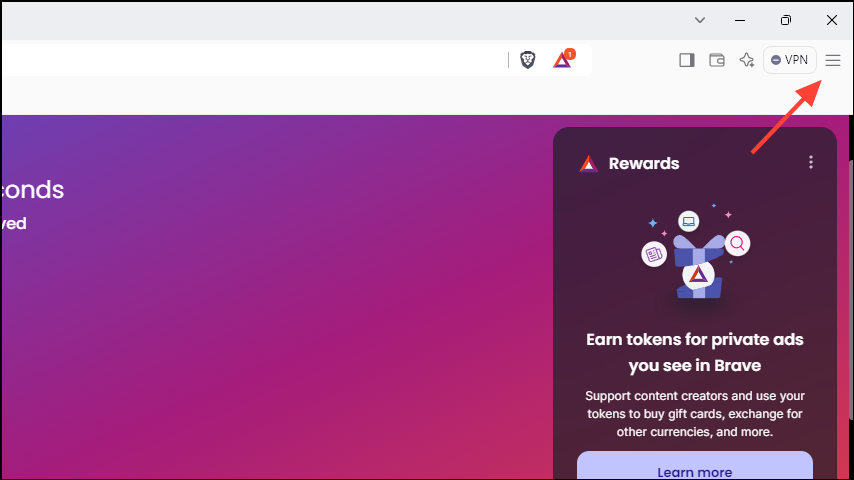
- Next, click on 'Settings'.

- When the Settings page opens, click on 'Privacy and Security' on the left.
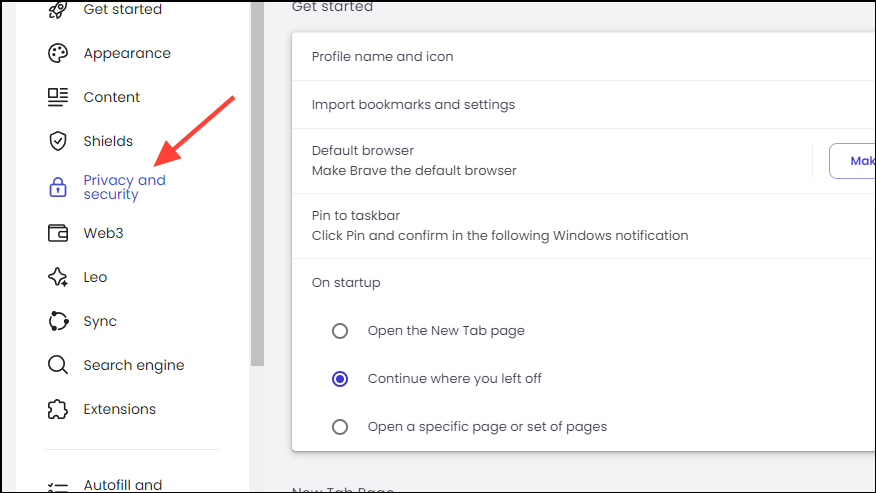
- Here, click on the 'Send a Do Not Track request with your browsing traffic' toggle and then on the 'Confirm' button to enable the option.
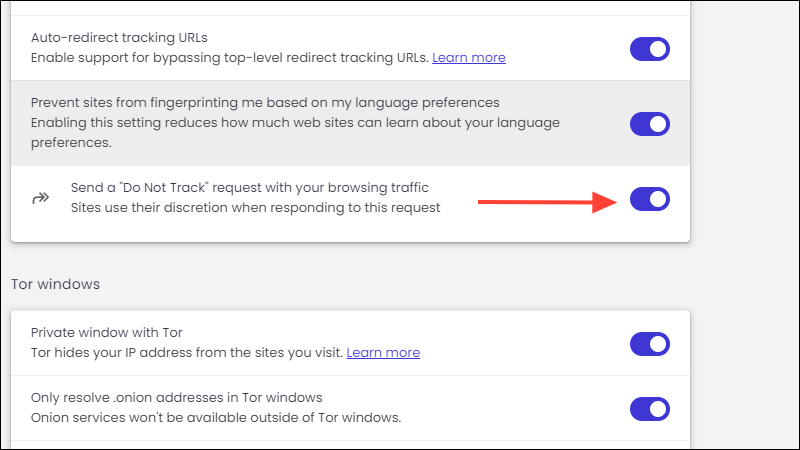
Brave on mobile
- On mobile, open the Brave browser and tap on the three dots at the bottom.
- Then tap on the 'Settings' option.

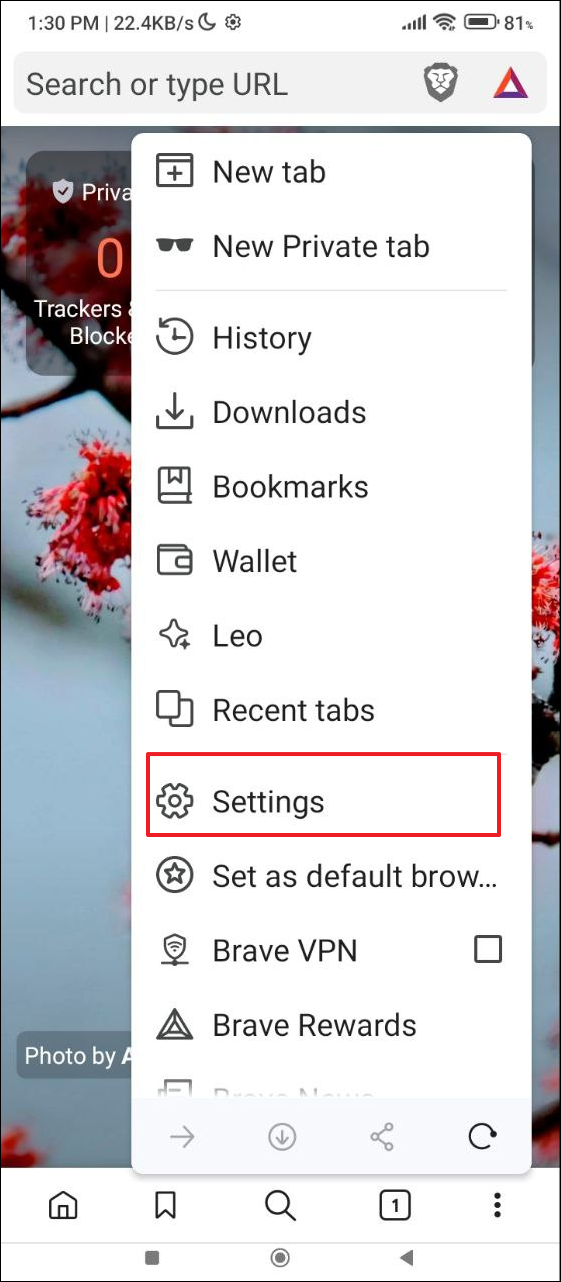
- Next, tap on 'Brave Shields and Privacy'.
- Scroll down on this page and tap on 'Send a Do Not Track request'.
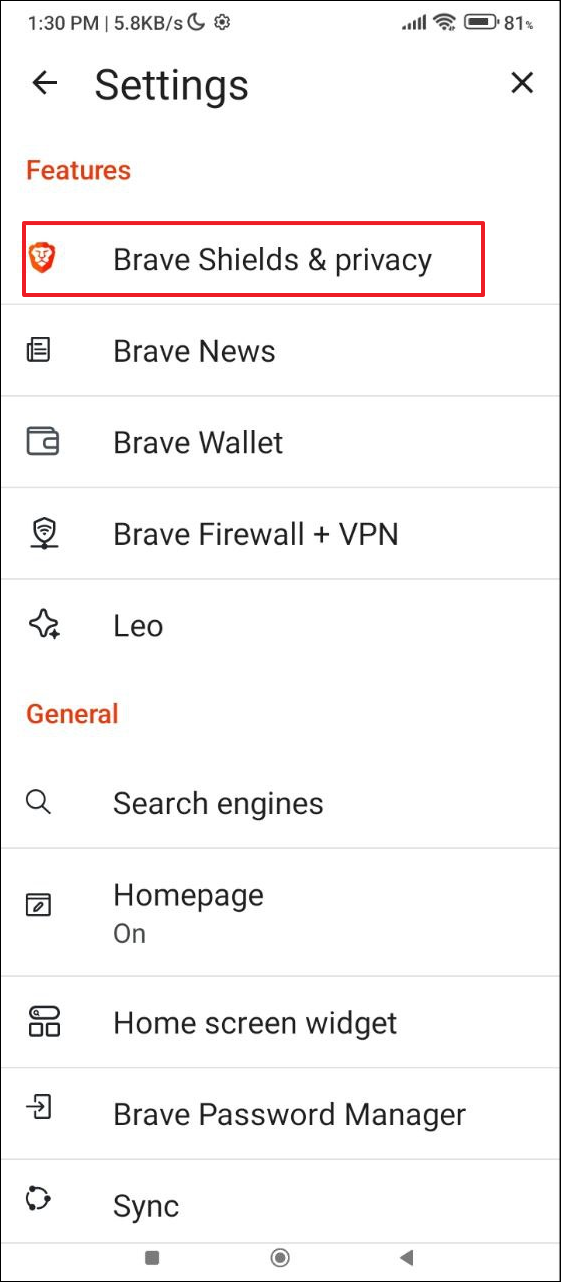

- On the next page, tap on the toggle for the 'Send a Do Not Track request' option.
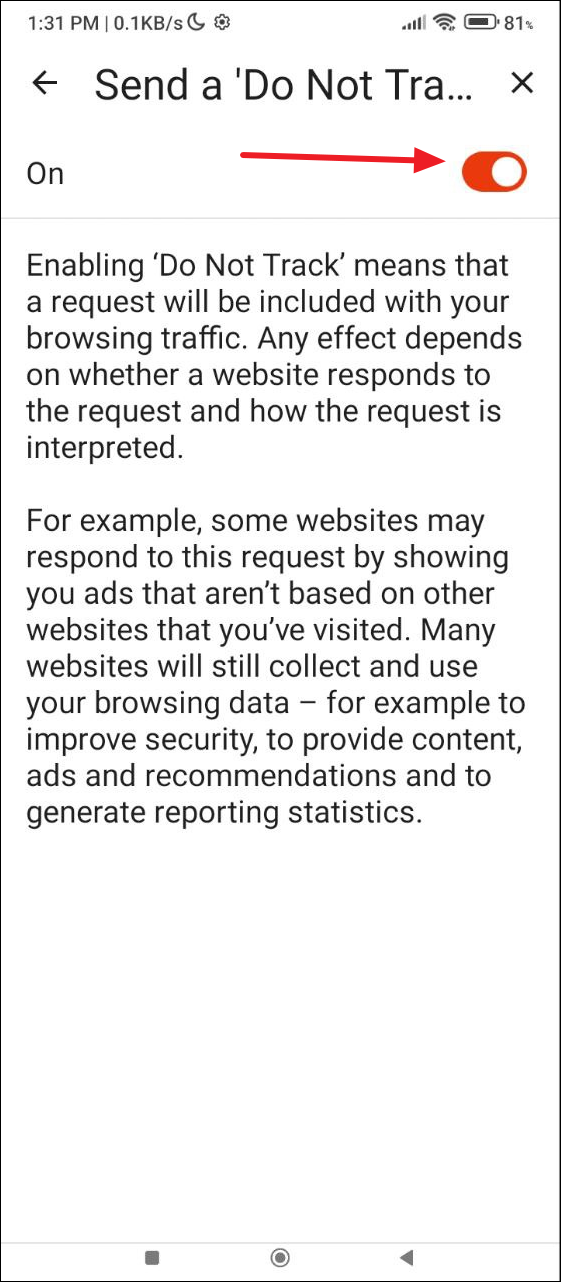
Opera
As with Firefox, you can only enable the Do Not Track feature on the desktop version of Opera and not on the mobile version.
- Launch Opera and click on the settings icon at the top.

- When the dropdown menu appears, scroll down and click on 'Go to full browser settings'.

- On the full browser settings page, click on 'Privacy and Security'.
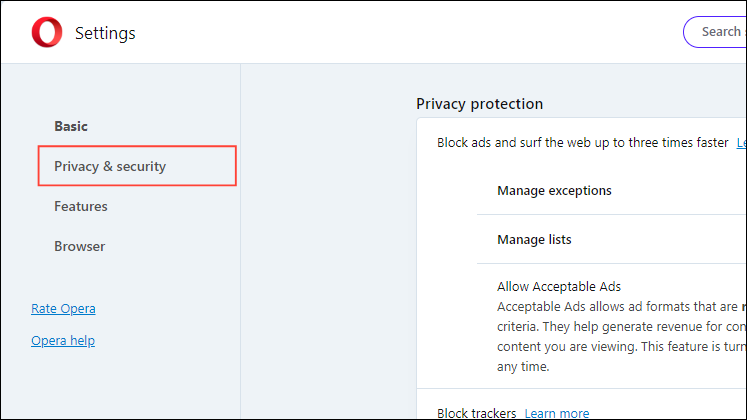
- Next, click on 'Third-party Cookies'.

- On the next page, under the 'Advanced' section, click on the 'Send a Do Not Track request with your browsing traffic' toggle and then on the 'Confirm' button.

Things to know
- Once you've enabled the 'Do Not Track' feature in your browser, you can check it by visiting the 'What is my browser' website. Simply open the website and it will let you know whether the feature is working or not.
- You can always turn off the 'Do Not Track' feature at any time by going into the browser settings and toggling it off from the Privacy and Security page.
- While it is recommended to turn on 'Do Not Track' in your web browser, keep in mind that many web services and websites do not change their behavior even when they receive the request.
- If you are unable to enable the feature, try removing and reinstalling your browser. In case that also does not work, switch to a different browser that has that option enabled.

